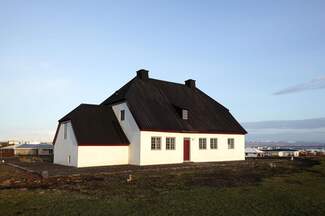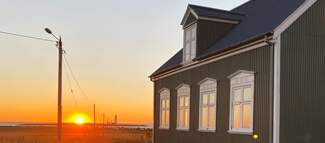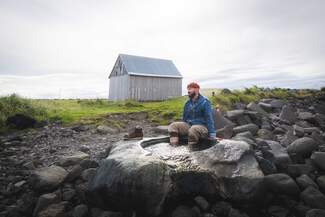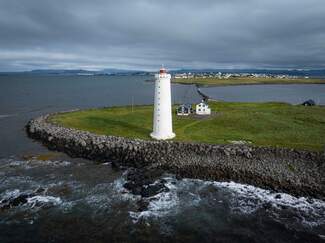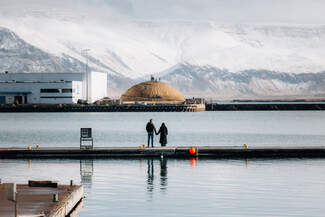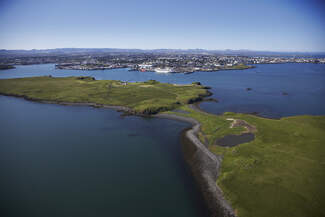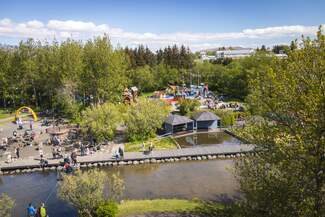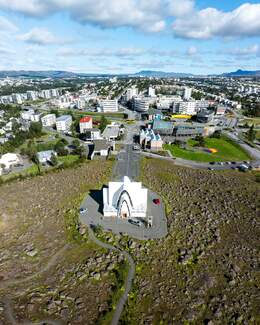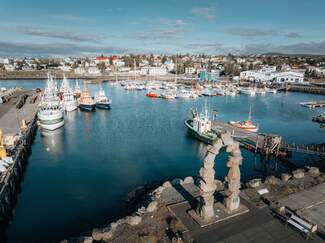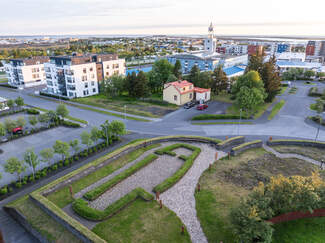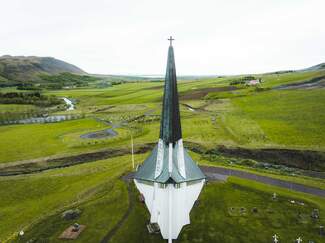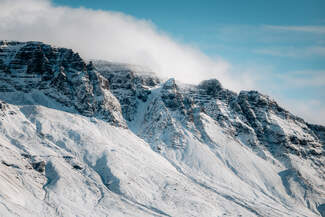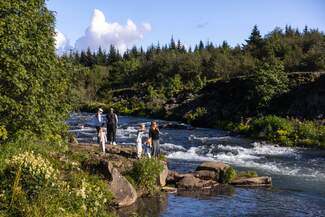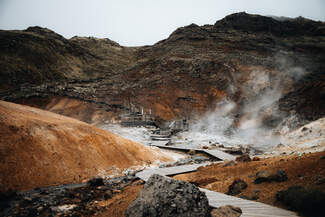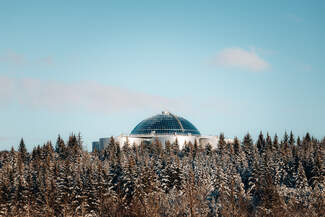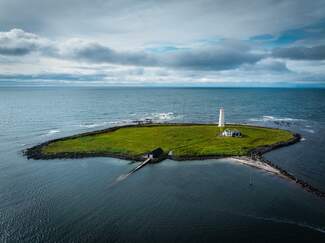
Top attractions
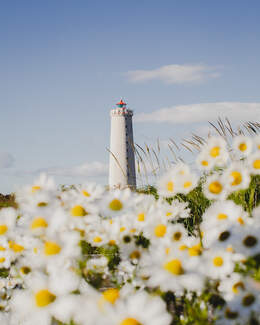
Grótta and the Lighthouse
Grótta sits at the edge of Seltjarnarnes, where land meets sea in a peaceful dance of tides and light. This tidal islet is crowned by a white lighthouse, guiding ships since 1947 and drawing visitors year-round. At low tide, a sandy path leads to the lighthouse, where birdlife thrives and waves crash on black shores. In winter, Grótta is a local favourite for northern lights viewing—quiet, remote-feeling, yet close to the city. In summer, it’s perfect for coastal walks under the midnight sun. As a protected nature reserve, it also offers seasonal access to nesting seabirds, creating a unique blend of nature, history, and serenity.
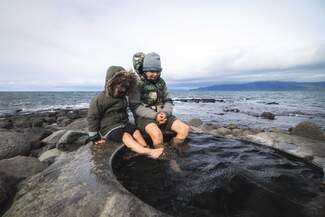
Wellness by the Sea
Wellbeing in Seltjarnarnes is delightfully down-to-earth. The Kvika foot bath (en. Cupstone), a small circular pool of geothermally heated seawater, sits quietly along the coast near Grótta. Created by artist Ólöf Nordal in 2005, Kvika invites you to dip your toes while watching the tide roll in or even the northern lights swirl above.
Just up the road, the Seltjarnarnes geothermal pool offers a more social soak. This intimate neighbourhood pool features geothermal hot tubs, a steam room, and salt-treated water that’s gentle on the skin. It’s a local favourite where laughter, quiet moments, and sea air all come together.
Together, Kvika and the swimming pool reflect Iceland’s approach to wellness: no fancy extras, just warmth, community, and nature close at hand.
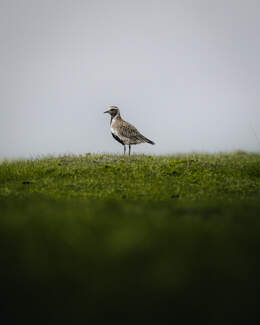
Birdwatching by the Bay
Seltjarnarnes offers one of the best birdwatching spots in the capital area. It is quiet, close to the sea, and full of life. Bakkatjörn, a small pond near Grótta, is a hotspot for spotting seabirds and waders. In spring and summer, arctic terns, eiders, redshanks, and oystercatchers are common sights. Autumn brings migrating flocks, and even in winter, hardy species linger. The coastline offers wide views and great photo opportunities. Whether you’re a seasoned birder or just curious, it’s easy to feel part of the landscape here where birds rule the skies and the rhythm of nature sets the pace.
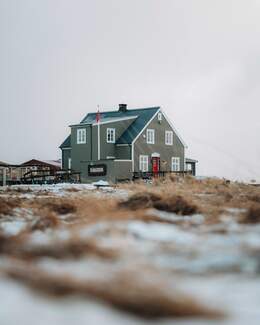
Architecture with a Story
Seltjarnarnes holds a quiet charm in its buildings, each with its own tale to tell. Ráðagerði, a charming timber house built in the early 20th century, now features a delightful restaurant following a loving restoration. Nesstofa, built in the 1700s, once housed Iceland’s first official doctor and now serves as a small museum, nestled by the sea. Seltjarnarnes church, a modern yet harmonious structure, opened in 1989. With its striking triangular roofline and bright interior, the church blends simplicity with grace. Together, they form a gentle mix of past and present, with a warm community heart.
Meet the Locals
What to do in Seltjarnarnes
How to get to Seltjarnarnes
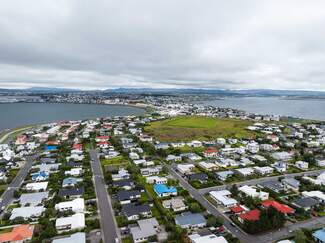
By Bus
To get to Seltjarnarnes and Grótta by bus, you can take bus number 11, which runs between Mjódd bus stop and Seltjarnarnes. The Hofgarður bus stop is closest to Grótta, which is 1 km away from the bus stop.
By Electric Scooter
Electric scooters are available at Seltjarnarnes.
By Car
There are parking lots in the area, for example, at Grótta.
